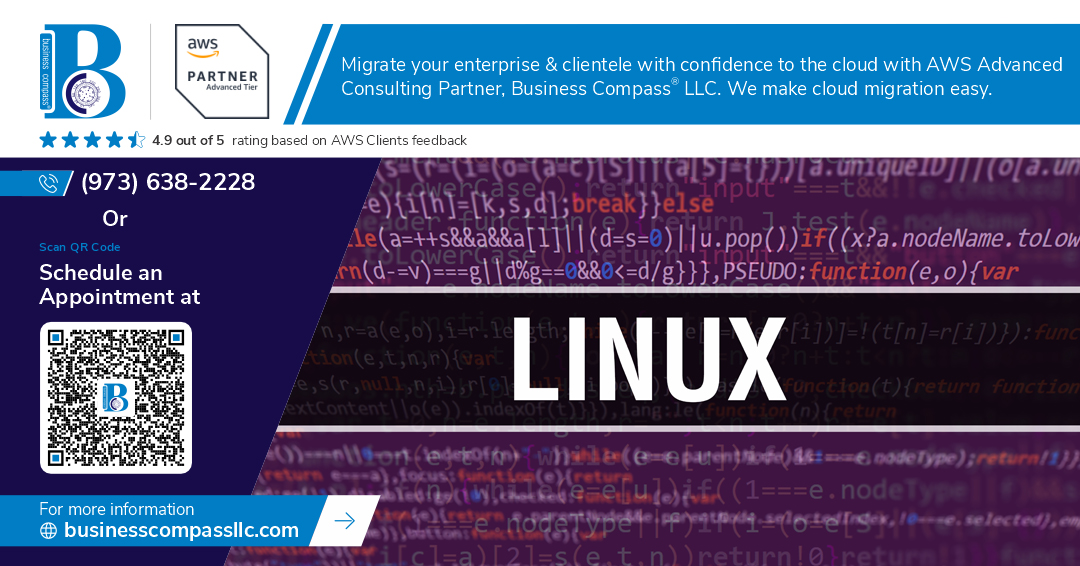Are you tired of the same old operating system experience? 🖥️ Imagine a world where you have the power to choose from a variety of flavors, each tailored to suit different needs and preferences. Welcome to the exciting realm of Linux distributions!
Linux, the open-source powerhouse, offers a smorgasbord of options that can leave even tech enthusiasts feeling overwhelmed. From user-friendly distros perfect for beginners to specialized flavors designed for cybersecurity experts, there’s a Linux distribution for everyone. But with so many choices, how do you know which one is right for you? 🤔
In this blog post, we’ll embark on a journey through the Linux landscape, comparing different flavors and helping you make an informed decision. We’ll explore major distributions, delve into specialized flavors, examine package management systems, and even compare desktop environments and performance. By the end, you’ll have a clear understanding of what makes each Linux flavor unique and which one might be your perfect match. Let’s dive in and discover the diverse world of Linux!
Major Linux Distributions
Ubuntu: User-friendly and popular
Ubuntu stands out as one of the most popular Linux distributions, known for its user-friendly interface and extensive community support. It’s an excellent choice for beginners transitioning from Windows or macOS, offering a smooth learning curve and a wealth of pre-installed software.
Key features of Ubuntu:
- Long-term support (LTS) versions for stability
- Regular six-month release cycle for cutting-edge features
- Vast software repository accessible through the Ubuntu Software Center
- Customizable desktop environment (GNOME by default)
Fedora: Cutting-edge features
Fedora is known for its bleeding-edge technology and frequent updates. It serves as a testing ground for new features that often make their way into other distributions, including Red Hat Enterprise Linux.
Fedora’s highlights:
- Latest software versions and kernel updates
- Strong focus on open-source software and security
- Workstation, Server, and IoT editions available
- Robust development tools for programmers
| Feature | Ubuntu | Fedora |
|---|---|---|
| Release Cycle | 6 months (LTS every 2 years) | 6 months |
| Default Desktop | GNOME | GNOME |
| Package Manager | APT | DNF |
| Target Audience | Beginners to Advanced | Intermediate to Advanced |
Debian: Stability and reliability
Debian is renowned for its rock-solid stability and commitment to free software principles. It forms the foundation for many other distributions, including Ubuntu.
Debian’s key attributes:
- Three release branches: Stable, Testing, and Unstable
- Extensive package repository with over 50,000 packages
- Support for multiple architectures
- Ideal for servers and mission-critical systems
CentOS: Enterprise-level security
CentOS, derived from Red Hat Enterprise Linux (RHEL) sources, offers enterprise-grade features without the cost of a commercial license. It’s particularly popular for server environments.
CentOS advantages:
- Long-term support and slow release cycle for stability
- Robust security features and regular updates
- Compatibility with RHEL ecosystems
- Ideal for businesses and organizations requiring enterprise-level reliability
Now that we’ve explored the major Linux distributions, let’s delve into some specialized Linux flavors that cater to specific needs and use cases.
Specialized Linux Flavors
A. Kali Linux: Cybersecurity focus
Kali Linux stands out as the go-to distribution for cybersecurity professionals and ethical hackers. This specialized flavor comes pre-loaded with over 600 penetration testing and security tools, making it an essential toolkit for vulnerability assessment and digital forensics.
Key features of Kali Linux:
- Pre-installed security tools
- Regular updates to maintain tool effectiveness
- Live system capability for portable use
- Customizable environment for specific security needs
B. Linux Mint: Windows-like interface
Linux Mint offers a familiar experience for users transitioning from Windows, thanks to its intuitive interface and user-friendly design. This distribution prioritizes ease of use without compromising on functionality.
| Feature | Description |
|---|---|
| Cinnamon DE | Windows-like desktop environment |
| Software Manager | Easy app installation and management |
| Timeshift | Built-in system backup and restore |
| Mint Tools | Custom utilities for system management |
C. Elementary OS: Mac-inspired design
Elementary OS takes inspiration from macOS, delivering a sleek and polished user interface. It’s designed for users who appreciate aesthetics and simplicity in their computing experience.
D. Arch Linux: Customization powerhouse
Arch Linux caters to advanced users who desire complete control over their system. This highly customizable distribution allows users to build their perfect Linux environment from the ground up.
E. Lubuntu: Lightweight for older hardware
Lubuntu breathes new life into older hardware with its lightweight design. This Ubuntu-based distribution uses minimal system resources, making it ideal for older computers or low-spec machines.
Now that we’ve explored these specialized Linux flavors, let’s delve into the various package management systems used across different distributions.
Package Management Systems
APT: Debian-based distributions
APT (Advanced Package Tool) is the primary package management system for Debian-based distributions, including Ubuntu and Linux Mint. It offers a user-friendly interface for installing, updating, and removing software packages.
Key features of APT:
- Dependency resolution
- Package cache management
- Secure package verification
- Multiple repository support
YUM/DNF: Red Hat-based distributions
YUM (Yellowdog Updater Modified) and its successor DNF (Dandified YUM) are package managers used in Red Hat-based distributions like Fedora and CentOS. DNF improves upon YUM’s functionality with better performance and dependency resolution.
Pacman: Arch Linux package manager
Pacman is the package management tool for Arch Linux and its derivatives. Known for its simplicity and speed, Pacman offers powerful features for maintaining and upgrading the entire system.
| Feature | APT | YUM/DNF | Pacman |
|---|---|---|---|
| Package format | .deb | .rpm | .pkg.tar.xz |
| Command syntax | apt install | yum/dnf install | pacman -S |
| Update system | apt update && apt upgrade | yum/dnf update | pacman -Syu |
| Remove package | apt remove | yum/dnf remove | pacman -R |
Now that we’ve explored the main package management systems, let’s examine how these differences impact the overall performance of various Linux distributions.
Desktop Environments
GNOME: Modern and sleek
GNOME is a popular desktop environment known for its clean, modern interface and user-friendly design. It offers a streamlined experience with a focus on simplicity and productivity. GNOME’s Activities overview provides quick access to applications, workspaces, and search functionality.
Key features of GNOME:
- Intuitive workspace management
- Customizable top bar and dash
- Extensions for added functionality
- Touch-friendly interface
KDE Plasma: Feature-rich and customizable
KDE Plasma stands out for its high level of customization and extensive feature set. It provides users with granular control over their desktop experience, allowing for deep personalization.
Notable aspects of KDE Plasma:
- Widgets for desktop customization
- Powerful system settings
- Integration with KDE applications
- Smooth animations and effects
Xfce: Lightweight and efficient
Xfce is the go-to choice for users seeking a balance between functionality and system resource usage. It’s particularly well-suited for older hardware or when performance is a priority.
Xfce advantages:
- Low memory footprint
- Fast startup times
- Traditional desktop layout
- Modular design for easy customization
MATE: Traditional look and feel
MATE offers a classic desktop experience, reminiscent of earlier GNOME 2 versions. It’s ideal for users who prefer a familiar and straightforward interface without sacrificing modern functionality.
MATE characteristics:
- Familiar two-panel layout
- Customizable applets
- Compatibility with modern technologies
- Active community support
| Desktop Environment | Resource Usage | Customization | Modern Features |
|---|---|---|---|
| GNOME | Moderate | Limited | High |
| KDE Plasma | High | Extensive | High |
| Xfce | Low | Moderate | Moderate |
| MATE | Low | Moderate | Moderate |
Each desktop environment caters to different user preferences and system capabilities. GNOME and KDE Plasma offer more modern features, while Xfce and MATE provide efficient performance on a wide range of hardware. Next, we’ll explore how these desktop environments contribute to the overall performance of different Linux distributions.
Performance Comparisons
Boot times
When comparing Linux distributions, boot times can be a crucial factor for users who value quick system startup. Here’s a breakdown of boot times for popular Linux distributions:
| Distribution | Average Boot Time |
|---|---|
| Ubuntu | 30-40 seconds |
| Fedora | 25-35 seconds |
| Arch Linux | 15-25 seconds |
| Lubuntu | 20-30 seconds |
| Linux Mint | 35-45 seconds |
Factors affecting boot times include:
- Hardware specifications
- Installed services and applications
- Type of boot loader
- Use of systemd or other init systems
Memory usage
Memory consumption varies significantly among Linux distributions, impacting system performance and multitasking capabilities. Here’s a comparison of idle memory usage:
| Distribution | Idle Memory Usage |
|---|---|
| Ubuntu | 1-1.5 GB |
| Fedora | 800 MB – 1.2 GB |
| Arch Linux | 300-500 MB |
| Lubuntu | 200-300 MB |
| Linux Mint | 700 MB – 1 GB |
Lightweight distributions like Lubuntu and Arch Linux excel in memory efficiency, making them ideal for older hardware or resource-constrained systems.
Battery life on laptops
Battery performance is crucial for laptop users. While exact figures depend on hardware and usage patterns, some distributions are known for better power management:
- Ubuntu and Linux Mint: Good out-of-the-box power management
- Fedora: Excellent with recent kernel optimizations
- Elementary OS: Known for efficient power consumption
- Manjaro: Offers good battery life with proper configuration
To maximize battery life:
- Use power-saving tools like TLP or PowerTop
- Optimize display brightness and keyboard backlight
- Disable unnecessary services and background processes
Next, we’ll explore how different Linux distributions handle gaming performance, which is becoming increasingly important for many users.
Linux offers a diverse array of distributions, each catering to different user needs and preferences. From major distributions like Ubuntu and Fedora to specialized flavors for security and multimedia, the Linux ecosystem provides options for beginners and advanced users alike. Package management systems and desktop environments further differentiate these distributions, allowing users to customize their experience.
When choosing a Linux flavor, consider your specific requirements, technical expertise, and desired performance. Whether you prioritize stability, cutting-edge features, or a particular use case, there’s likely a Linux distribution that fits your needs. Explore different options, test them in virtual environments, and join community forums to make an informed decision about which Linux flavor is right for you.




















